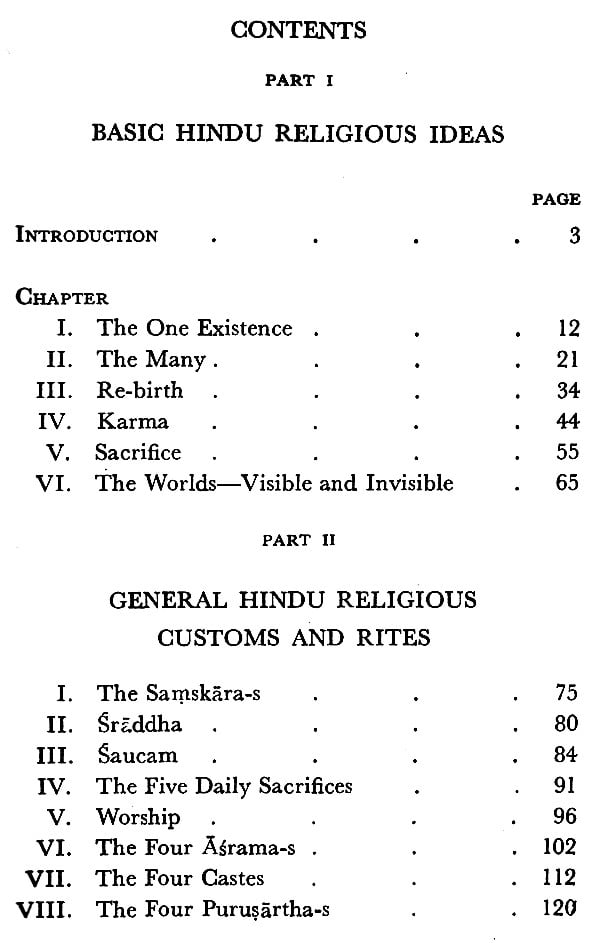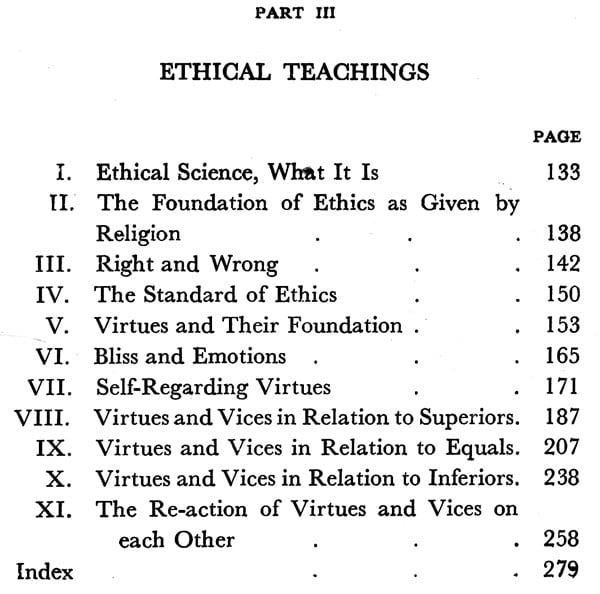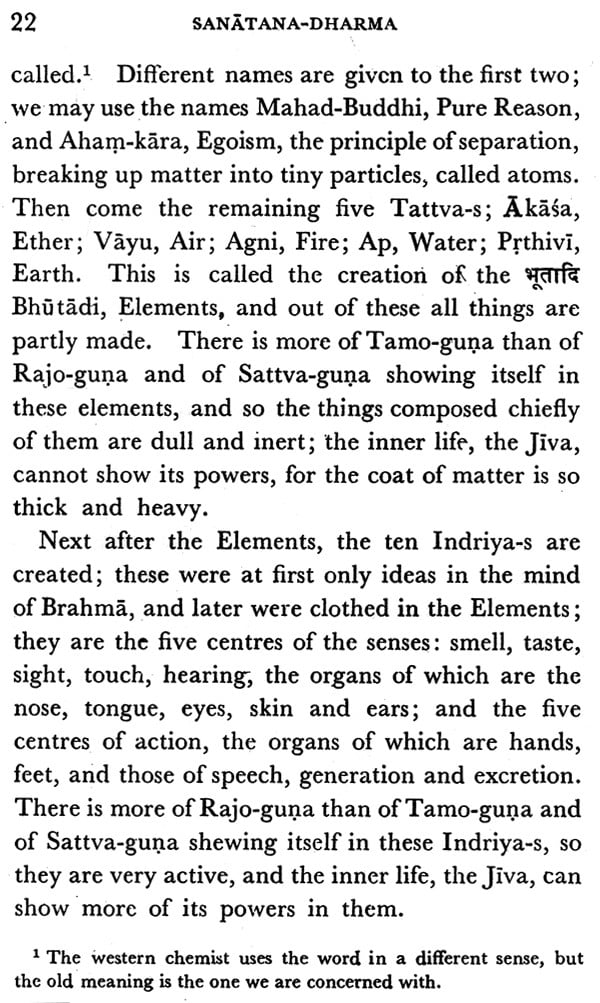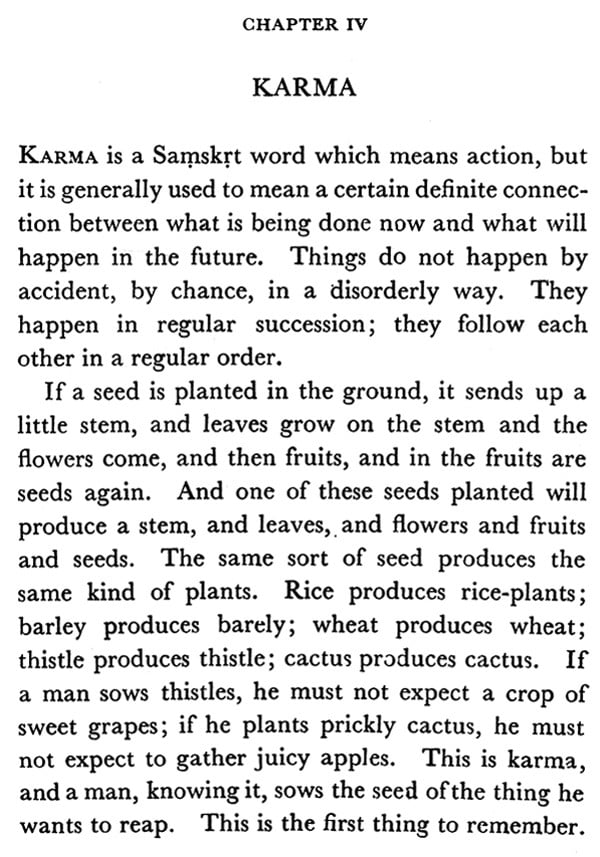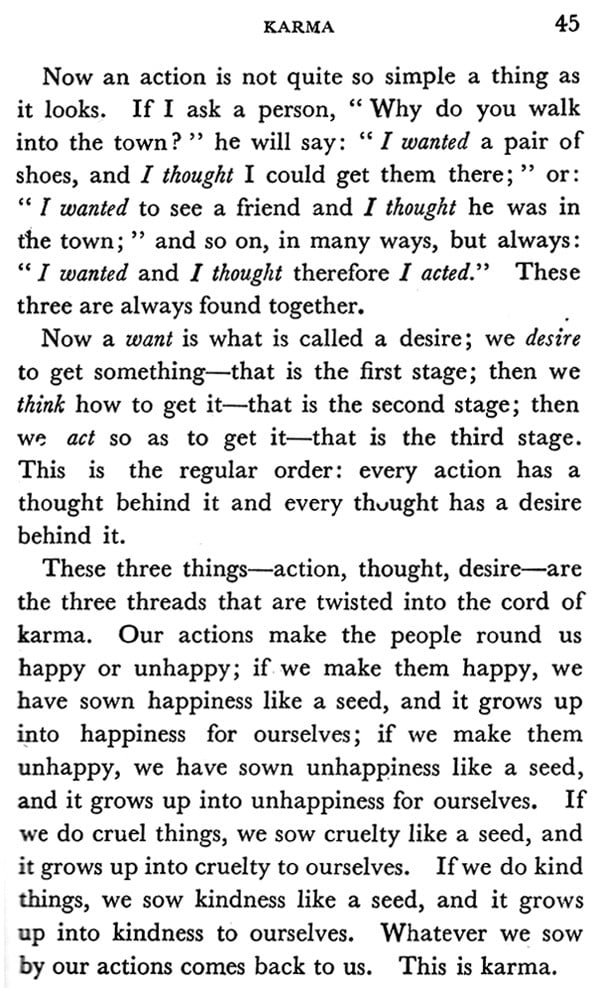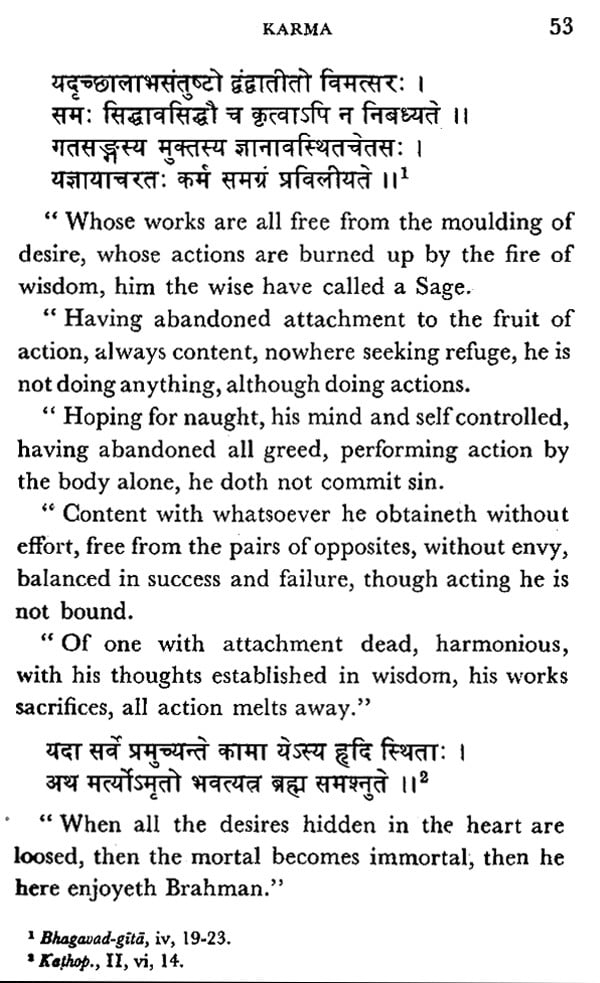
Sanatana Dharma- An Elementary Textbook of Hindu Religion and Ethics
Book Specification
| Item Code: | NAZ997 |
| Author: | Annie Besant and Bhagavan Das |
| Publisher: | The Theosophical Publishing House Adyar, Chennai |
| Language: | ENGLISH & SANSKRIT |
| Edition: | 2022 |
| ISBN: | 8170592844 |
| Pages: | 311 |
| Cover: | PAPERBACK |
| Other Details | 7.50 X 5.00 inch |
| Weight | 360 gm |
Book Description
SANATANA-DHARMA means the Eternal Religion, the Ancient Law, and it is based on the Veda-s, sacred books given to men many long ages ago. This Religion has also been called the Aryan Religion, because it is the Religion that was given to the first nation of the Aryan race; Aryan means noble, and the name was given to a great race, much finer in character and appearance than the races which went before it in the world's history. The first families of these people settled in the northern part of the land now called India, and that part in which they first settled was named Aryavarta, because these Aryan-s lived in it. "(The land) from the eastern ocean to the western ocean, between the two mountains (Himavat and Vindhya), the wise call Aryavarta.”
In later days the Religion was called the Hindu Religion, and this is the name by which it is now usually known. It is the oldest of living Religions, and no other Religion has produced so many great men-great teachers, great writers, great sages, great saints, great kings, great warriors, great statesmen, great benefactors, great patriots. The more you know of it, the more you will honour and love it, and the more thankful you will be that you were born into it. But unless you grow up worthy of it, this great and holy Religion will do you no good.
THE BASIS OF SANATANA-DHARMA
The Ancient Religion is based on one strong foundation on which are erected the walls of its structure.
The foundation is called Srutih, " that which has been heard; " the walls are called Smrtih, " that which has been remembered." The Sruti has been given through very wise men, who heard it and received it from Deva-s; these sacred teachings were not written down till comparatively modern times, but were learnt by heart, and constantly repeated.
The teacher sang them to his pupils, and the pupils sang them after him, a few words at a time, over and over again, till they knew them thoroughly. Boys still learn the sruti in the same way as their forefathers learnt it in very ancient days, and you may hear them chanting it in any Vaidika PAthasala at the present time.
The Sruti consists of the Chaturvedah, the Four Veda-s: Veda means knowledge, that which is known; and the knowledge which is the foundation of Religion is given to man in the Four Veda-s. They are named Rig-Veda; Yajur-vedah. Sama-vedah; and Atharva-vedah.
Each Veda is divided into three parts :
1. Samhita, collection.
2. Brahmanam.
3. Upanisad.
The Mantra portion consists of Mantra-s, or sentences in which the order of sounds has a particular power, produces certain effects. These are in the form of hymns to the Deva-s-whose relations to men we shall study presently-and when they are properly chanted by properly instructed persons, certain results follow. These are used in religious ceremonies, and the value of the ceremony depends chiefly upon their proper repetition.
The Brahmana portion of the Veda-s consists of directions about ritual and explains how to perform the ceremonies in which were used the Mantra-s given in the first part; and further, stories connected with them.
**Contents and Sample Pages**
